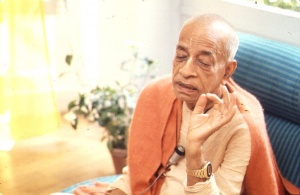CC Madhya 20.355 (1975): Difference between revisions
(Vanibot #0027: CCMirror - Mirror CC's 1996 edition to form a basis for 1975) |
(Vanibot #0019: LinkReviser - Revise links, localize and redirect them to the de facto address) |
||
| Line 2: | Line 2: | ||
<div style="float:left">'''[[Sri Caitanya-caritamrta (1975)|Śrī Caitanya-caritāmṛta (1975)]] - [[CC Madhya (1975)|Madhya-līlā]] - [[CC Madhya 20 (1975)|Chapter 20: Lord Śrī Caitanya Mahāprabhu Instructs Sanātana Gosvāmī in the Science of the Absolute Truth]]'''</div> | <div style="float:left">'''[[Sri Caitanya-caritamrta (1975)|Śrī Caitanya-caritāmṛta (1975)]] - [[CC Madhya (1975)|Madhya-līlā]] - [[CC Madhya 20 (1975)|Chapter 20: Lord Śrī Caitanya Mahāprabhu Instructs Sanātana Gosvāmī in the Science of the Absolute Truth]]'''</div> | ||
<div style="float:right">[[File:Go-previous.png|link=CC Madhya 20.354 (1975)|Madhya-līlā 20.354]] '''[[CC Madhya 20.354 (1975)|Madhya-līlā 20.354]] - [[CC Madhya 20.356 (1975)|Madhya-līlā 20.356]]''' [[File:Go-next.png|link=CC Madhya 20.356 (1975)|Madhya-līlā 20.356]]</div> | <div style="float:right">[[File:Go-previous.png|link=CC Madhya 20.354 (1975)|Madhya-līlā 20.354]] '''[[CC Madhya 20.354 (1975)|Madhya-līlā 20.354]] - [[CC Madhya 20.356 (1975)|Madhya-līlā 20.356]]''' [[File:Go-next.png|link=CC Madhya 20.356 (1975)|Madhya-līlā 20.356]]</div> | ||
{{CompareVersions|CC|Madhya 20.355|CC 1975|CC 1996}} | |||
{{RandomImage}} | {{RandomImage}} | ||
==== TEXT 355 ==== | ==== TEXT 355 ==== | ||
| Line 11: | Line 10: | ||
<div class="verse"> | <div class="verse"> | ||
:yasyāvatārā jñāyante | :yasyāvatārā jñāyante | ||
: | :śarīriṣv aśarīriṇaḥ | ||
:tais tair atulyātiśayair | :tais tair atulyātiśayair | ||
:vīryair dehiṣv asaṅgataiḥ | :vīryair dehiṣv asaṅgataiḥ | ||
| Line 27: | Line 26: | ||
<div class="translation"> | <div class="translation"> | ||
" 'The Lord does not have a material body, yet He descends among human beings in His transcendental body as an incarnation. Therefore it is very difficult for us to understand who is an incarnation. Only by His extraordinary prowess and uncommon activities, which are impossible for embodied living entities, can one partially understand the incarnation of the Supreme Personality of Godhead.' | |||
</div> | </div> | ||
| Line 34: | Line 33: | ||
<div class="purport"> | <div class="purport"> | ||
This is a quotation from Śrīmad-Bhāgavatam ([[SB 10.10.34-35| | This is a quotation from Śrīmad-Bhāgavatam ([[SB 10.10.34-35|10.10.34]]). | ||
</div> | </div> | ||
Latest revision as of 15:51, 18 September 2020

A.C. Bhaktivedanta Swami Prabhupada
TEXT 355
- yasyāvatārā jñāyante
- śarīriṣv aśarīriṇaḥ
- tais tair atulyātiśayair
- vīryair dehiṣv asaṅgataiḥ
SYNONYMS
yasya—whose; avatārāḥ—incarnations; jñāyante—can be known; śarīriṣu—among the living entities; aśarīriṇaḥ—of the Lord, who has no material body; taiḥ taiḥ—all those; atulya—incomparable; atiśayaiḥ—extraordinary; vīryaiḥ—by prowess; dehiṣu—among the living entities; asaṅgataiḥ—impossible.
TRANSLATION
" 'The Lord does not have a material body, yet He descends among human beings in His transcendental body as an incarnation. Therefore it is very difficult for us to understand who is an incarnation. Only by His extraordinary prowess and uncommon activities, which are impossible for embodied living entities, can one partially understand the incarnation of the Supreme Personality of Godhead.'
PURPORT
This is a quotation from Śrīmad-Bhāgavatam (10.10.34).